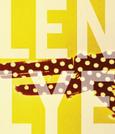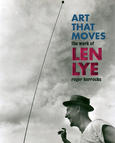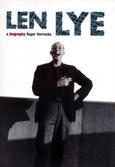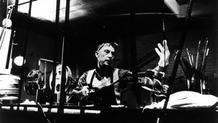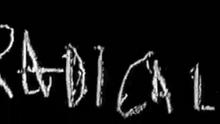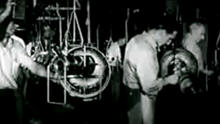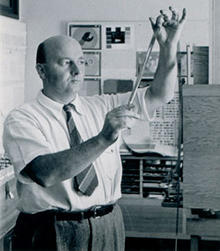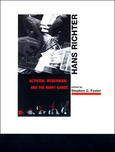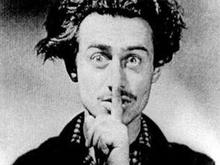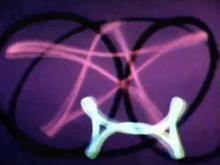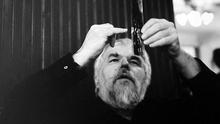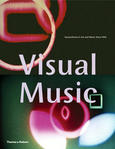Swinging the Lambeth Walk
(1939)by Len Lye matches visual motifs to musical instruments: diagonals introduce piano phrases, circles express drum beats, wavy horizontals represent guitars licks, vertical lines map base parts, etc.
Swinging the Lambeth Walk (1939), a four-minute, hand-painted Dufaycolor film "with a colour accompaniment by Len Lye". Primary red, blue and deep green colour fields are rendered frameless by upwardly cascading kite shapes, luminous tapered stripes, and batik-like patterns.
Akin to Oskar Fischinger's fine art advertising films, Lye's cinematic "figures of motion" sublimated their commercial purpose by emphasising geometric and all-over abstraction and direct authorial inscription. As Tess Takahashi notes, filmmakers like Lye, Norman McLaren and Harry Smith saw direct animation as "a way for the artist to imbue film with the imprint of the filmmaker's essential self… [This] self, represented for Lye by the then-new discovery of DNA, was transmitted in the process of direct animation.” Characterised by an obsessive fascination with colour, pattern, texture and movement these films elude textual analysis and descriptive language, preferring the non-verbal register of synaesthesic perception. Like Stan Brakhage's hand-painted oeuvre, Lye's films strive toward a condition of pure cinema. This focus on medium-specificity and formal concerns limits the range of possible (literal) interpretations, and has been described as "cold rationalism" by the avant-garde film diarist, Jonas Mekas.
Source: Senses of Cinema
